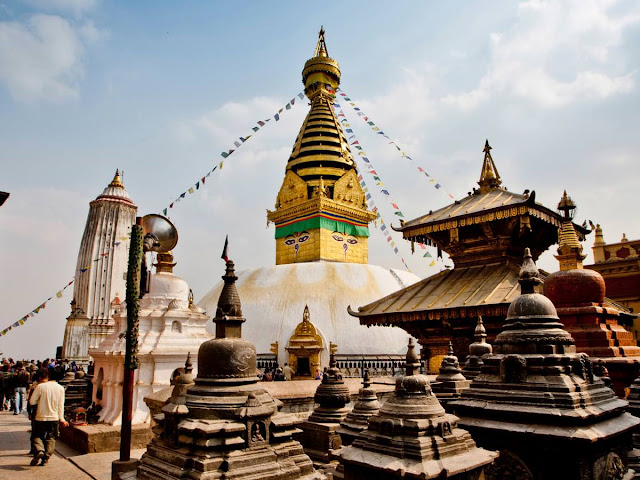Itum Bahal

The long, rectangular courtyard of the Itum Bahal is the largest bahal (Buddhist monastery courtyard) in the old town and remains a haven of tranquillity in the chaotic surroundings. On the western side of the courtyard is the Kichandra Bahal , one of the oldest bahals in the city, dating from 1381. A chaitya in front of the entrance has been completely shattered by a Bodhi tree, which has grown right up through its centre. Inside the Kichandra Bahal (or ‘Keshchandra Paravarta Mahar Bihar’) is a central pagodalike sanctuary, and to the south is a small chaitya decorated with graceful standing bodhisattvas. On the northern side of the courtyard are four brass plaques mounted on the upper-storey wall. The one on the extreme left shows a demon known as Guru Mapa taking a misbehaving child from a woman and stuffing it greedily into his mouth. Eventually the demon was bought off with the promise of an annual feast of buffalo meat, and the plaque to the right shows him sitting ...



